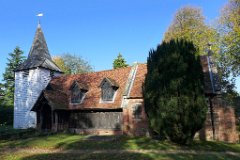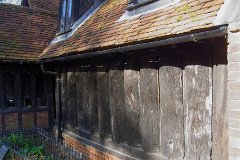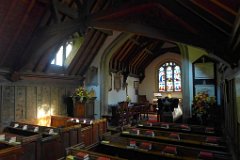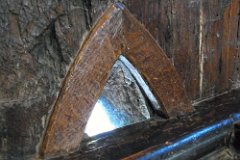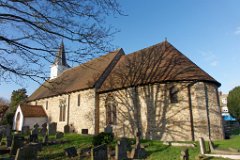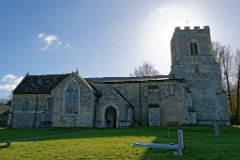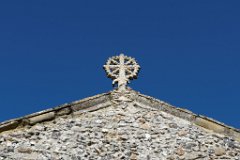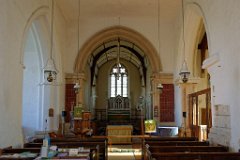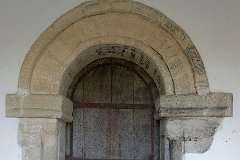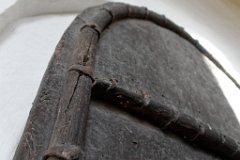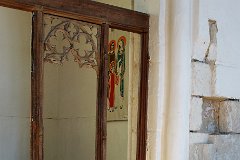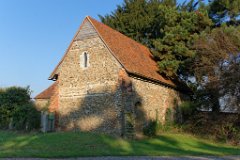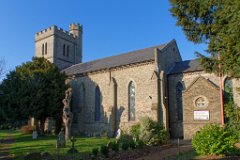73 / 128
Hadstock - St Botolph
St Botolph's is a complex and interesting church. The nave and transepts are late Saxon (11th century), the transept arches are late 13th/early 14th century, the tower 15th century and the chancel, 19th century. The building is Grade I listed and is built on the site of a 7th century Saxon church. The earlier church was unusually elaborate in that it also had transepts, which may indicate that there was a Saxon monastery here.
Although the north transept is 11th century (long-and-short work can be seen in the northwest corner), the large window was added in the 14th century. Initially there was a central tower between the transepts but that collapsed (probably during the 13th century) and the current tower was built on the west end of the church. The nave was originally lit by six double-splayed windows of which four remain, complete with their original wooden frames. The north doorway (and door) are Saxon, dated by an irregular pattern of leaves carved along the band around the arch and on the capitals. The chancel was rebuilt in the 14th century, then again in 1790 and the current chancel was built in 1884 by Butterfield, using decorative features linking the chancel to the 15th century tower.
St Botolph's church has a good claim to be the minster church founded in 1016 by King Cnut following the Battle of Assandun, when Cnut defeated the English armies led by King Edmund II ("Ironside") and in so doing, united England under one ruler. Cnut ordered "a church built of lime and stone for the souls of those slain in the Battle of Assandune" in 1016, and it was completed in 1020. The size of the current church, the importance and complexity of the earlier 7th century building (possibly indicating this was the site of a Saxon monastery) and the proximity of the site to the village of Ashdon, all point to the possibility that this is Cnut's church
